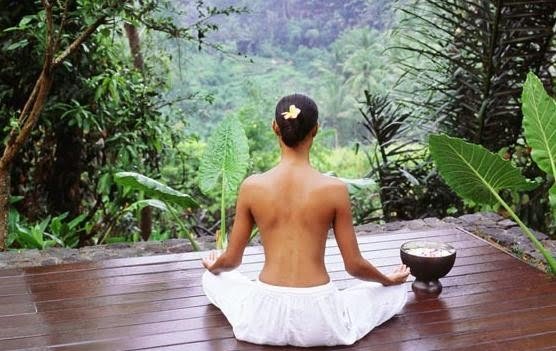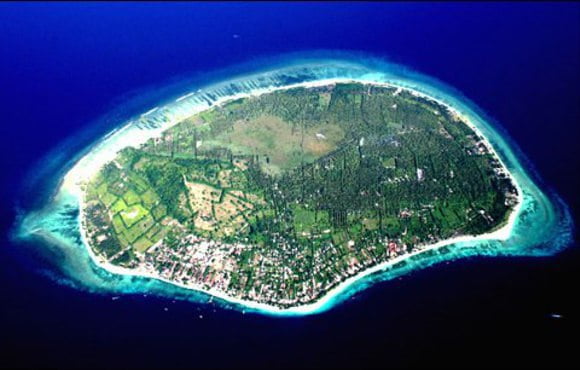Yogyakarta – also known as Jogjakarta – is a thriving townhome to 500,000 inhabitants and the most popular tourist destination on Java island, Indonesia. The city is named after the Indian city of Ayodha from the Ramayana epic and translates to ‘A city that is fit to prosper,’ with Yogya meaning ‘suitable, fit, proper’ and Karta meaning ‘prosperous, flourishing.’

True to its name, Yogyakarta is renowned as a center of classical Javanese fine art and culture as well as a thriving tourist destination due to its proximity to the temples of Borobudur and Prambanan.
Yogyakarta Fun Facts:
- The city of Yogyakarta is only one of five districts within the semi-autonomous “Yogyakarta Special Region.” This special status is thanks to the Sultanate of Hamengkubuwono, which has ruled the area since 1749 and through the difficult times of occupation and revolution.
- Yogyakarta was the revolutionary capital city of the republic from 1946 to 1949 when Jakarta was still occupied by the Dutch. Thanks to this, the Indonesian central government recognized the Sultan of Yogyakarta as the appointed governor of the region and it remains the only position that is not elected directly by the people.
- The Indonesian central government has tried to weaken the sultan’s power by calling for direct election for the governor, however the present Sultan Hamengkubuwono X was chosen by an overwhelming majority.
Best Time to Visit Yogyakarta
There are two distinct seasons in Yogyakarta: the wet season and the dry season. The wet season generally stretches from October to March, but the rainfall is heaviest during December through February and it is best to avoid travel during those months.
There is very little rain from June through September and those are the best months to visit the city.
As a tropical city located close to the equator, Yogyakarta enjoys warm weather year-round, which remains steady in the high 80s or low 90s (Fahrenheit).
How to Get to Yogyakarta
The easiest way to get to Yogyakarta is to catch a flight to Yogyakarta’s Adisucipto International Airport, which is located around 8 km east of town. The airport has frequent flights to and from Bali, Jakarta, as well as other major cities in Java, Sumatra, Kalimantan, and Sulawesi.
There are also flights to and from international destinations such as Kuala Lumpur and Singapore.
How to Get Around Yogyakarta
It’s really easy to get around the city of Yogyakarta and you have a few options at hand to choose from.
The cheapest option, of course, is to walk. You can pick up an English map at the airport and the train station, as well as from the Tourism Authority’s offices next to Hotel Mutiara on Jl. Malioboro.
Another option is to take a taxi. Most of the taxis in Yogyakarta are metered and start at 5,500 IDR ($0.55 USD). Most trips around town center should cost no more than 15,000 IDR ($1.50). After dark, the minimum taxi fare is 10,000 IDR ($1 USD).
For those comfortable with haggling, becaks (bicycle rickshaws) and andongs (horse-pulled carts) offer more transportation options.

If you want to see the city on your own, Yogyakarta has several car and motorbike rental agencies just outside Tugu Station near Jalan Pasir Kembang. A motorbike can be rented for around 40,000 IDR ($4 USD) for 24 hours and cars will cost around 350,000 IDR ($35 USD) for 24 hours.
Popular Attractions Around Yogyakarta
Yogyakarta is a beautiful city, but a large part of its popularity is due to its close proximity to other popular destinations.
Here are a few must-see places while visiting Yogyakarta:
Borobudur
Borobudur is a gargantuan Buddhist temple complex and an absolute must-see attraction in Java. It’s located just 40 kilometers northwest of Yogyakarta, set in a fertile valley between two rivers and two volcanoes.

Prambanan
This UNESCO heritage-listed temple complex is home to some 224 individual Hindu temples and located just 15 kilometers from Yogyakarta. Prambanan is often overshadowed by Borobudur, but it is a fascinating place in its own right and a must-visit attraction in Java.

Parangtritis Beach
Parangtritis beach is definitely worth a day trip is you’re craving some fresh sea air and wide open horizons after a few days of shopping and temple viewing. This black volcanic sand beach has a spectacular sunset and is a beautiful place to spend a few quiet hours flying kites or riding horseback through the small village near the beach.

Please note that this beach is absolutely NOT for swimming – the strong currents have claimed several lives – and also not a good place for sunbathing as the locals are conservative and tend to enjoy the beach fully-clothed.
Also keep in mind that you should always travel as part of a larger group when going to or from Parangtritis beach. There are very few police stations or posts on the long stretch between Yogyakarta and the beach and there have been known to be motorcycle thieves on the road.
Things to See in Yogyakarta
Despite being a relatively small city, Yogyakarta has a lot to offer from heritage building and monuments to beaches, markets, cultural performances, and archeological and religious sights.
Here are some of the must-see attractions of Yogyakarta:
Kraton Ngayogyakarta
The number one must-see attraction in Yogyakarta is Sri Sultan Hamengkubuwono’s palace. The Kraton, or Sultan’s Palace, has been at the heart of civic life for the people of Yogyakarta since the mid 1700s. It is still the current home for Yogyakarta’a sultan, Hamngkubuwono X, so most areas are off limits but you can still tour much of the grounds and maybe get lucky and catch a show or two while you’re there.
Much of the other attractions are also located within spitting distance from the Kraton, such as…
Taman Sari (Water Palace)
The water palace stands like an oasis in the middle of the city. The beautiful European-styled complex was built in the 1750s and is adorned with Javanese motifs and hosts several bathing pools, canals, as well as rooms used for leisure and relaxation by the Sultan and his family.
Pasar Burung (Bird Market)
Birds play a significant role in Javanese culture and most homes have at least one as a pet. If you’re in Yogyakarta, Pasar Burung is definitely worth a visit – check out the rows and rows of wooden traditional bird cages for sale.
Candi Sambisari (Sambisari Temple)
Situated close to the airport, Sambisari is a small temple built around the 9th century to adore the Shiva gods. It was only recently discovered – in the 60s – buried under tons of ash. It is now a beautifully preserved and well-maintained temple that offers an uncrowded, quiet space for visitors to look around.
Things to Do in Yogyakarta
Play Street Chess Outside the Sultan’s Palace
At slow, quiet intervals during the day, becak drivers will play chess on the street with large wooden sets. You can find them around the end of Malioboro Street near the Kraton complex. There’s no need to accept or offer any bets on the game(s) – it’s a great way to simply get to know the locals and pass some time.
Play a Game of Masangin
At the Sultan’s Square, you can play this game that involves blindfolding the participant and having him or her walk straight to pass two ancient ficus trees. It’s easier said than done.
See Wayang Kulit
Wayang Kulit, the Javanese shadow play, is accompanied with gamelan orchestra and performed every night at Museum Sonobudoyo. Tickets cost around $2 USD and is not to be missed.
Shop at Malioboro
Yogyakarta offers a variety of curios for the interested shopper. You’ll find timeless pieces among batik, traditional wayang puppets, sculpture, ceramics, silverware, and countless handicrafts from everywhere in Indonesia. The most popular place to do this is Malioboro, a well-known shopping promenade measuring around 2 km in length, full of shops and street stalls.

What to Eat in Yogyakarta
Yogyakarta’s dishes are known for their sweetness, although it’s fast-changing thanks to the influence from immigrants and travelers constantly moving into and through Yogyakarta. You’ll find a range of flavors to try in this city from sweet to spicy to absolutely fiery.
The local dishes are unique and definitely worth trying. Don’t miss…
- Gudeg: A curry of jackfruit, chicken and egg served with rice. This is the most famous local dish and not particularly appetizing looking, but absolutely delicious.
- Kipo: Bite-size snacks made of green colored tapioca dough filled with sweetened grated coconut. Yum.
Yogyakarta Travel Tips
Like any other large city, Yogyakarta has its share of petty crime. Keep an eye on your belongings at all times and watch out for pickpocketing and scams.
The gallery scam is a popular scam where someone will approach you and tell you about a government art center with great prices. They’ll spend a few hours telling you about how batik is made but this is ultimately a scam to manipulate you into buying over-priced art. Kindly decline their offers and you’ll be fine.
Also take precaution when walking in the city as it can get crowded and traffic is brutal.
And as always – never travel without travel insurance.
Thanks for visiting our site Voyager – indonesiad.com and taking the time to read our post!
We’d love if you’d comment and share this post.
If you find the website helpful we would appreciate if you support us by clicking on the related Ads that Google provides you around the pages.









[…] photo credit: indonesiad.com | source : x […]